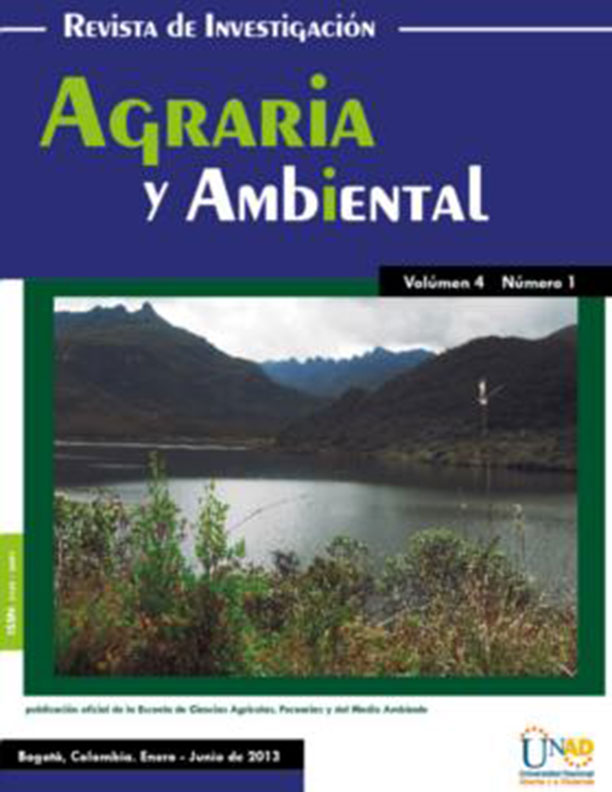When RIAA receives the postulation of an original by its author, either through email or post mail, considers that it can be published in physical and/or electronic format and facilitates its inclusion in databases, newspaper archives and other systems and indexing process. RIAA authorizes the reproduction and citation of the Journal’s material, provided that explicitly indicates journal name, the authors, the article title, volume, number and pages. The ideas and concepts expressed in the articles are responsibility of the authors and in no case reflect the institutional policies of the UNAD.
Collection of castor-oil plant germoplasm (Ricinus communis L.) in two municipalities of Arauca, Colombia
Ricinus communis L., commonly known as the castor-oil plant, is important for its use in biofuels production. With the objective of learning about its current status, in 40 villages influential to the oil complex of Caricare (municipality of Arauquita) and Caño Limón (municipality of Arauca) in Arauca, Colombia (where five years earlier the crop had been established), a collection of sexual seed was carried out between December 2011 and January 2012. The variables studied include passport data as a collection resource, local name, relief, and soil type among others. A Garmin map76CSx was used in order to identify the transects and record data such as geographic location and elevation. Simple descriptive statistics were used to identify the variables of greatest variation. Using the qualitative variables of greatest importance, a contingency table analysis with a significance level of 5%, a multiple correspondence analysis (MCA) and principal component analysis (PCA) were performed for quantitative and qualitative variables, in addition to a classification analysis through a similarity matrix. The castor-oil plant was found in 25% of the villages visited. 12 introductions were collected, four from Caricare and eight from Caño Limón. Although the environmental conditions were favorable for its cultivation, there are no castor-oil plant crops in the locations visited. The absence of grain commercialization and oil extraction equipment is the main limiting factor. A garden was established using collected materials for the purpose of research, breeding and propagation.
When RIAA receives the postulation of an original by its author, either through email or post mail, considers that it can be published in physical and/or electronic format and facilitates its inclusion in databases, newspaper archives and other systems and indexing process. RIAA authorizes the reproduction and citation of the Journal’s material, provided that explicitly indicates journal name, the authors, the article title, volume, number and pages. The ideas and concepts expressed in the articles are responsibility of the authors and in no case reflect the institutional policies of the UNAD.









